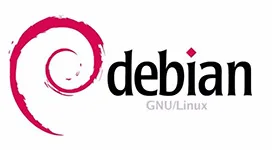I’m running a fresh Varnish 7.5 install together with Hitch as a proxy for a remote server. It works great. But I’m trying to port in a little bit of inline C from my old install and I can’t for the life of me get Varnish to allow it. The system is Debian 11 and Varnish was installed from the official packagecloud repo via their official install script.
Varnishadm tells me this:
Varnish> param.show vcc_feature
200
vcc_feature
Value is: none,+err_unref,+allow_inline_c,+unsafe_path
Default is: none,+err_unref,+unsafe_path
And my systemd execstart for varnish tells me this:
/usr/sbin/varnishd -a :80 -a localhost:8443,PROXY -p feature=+http2 -p vcc_feature=+allow_inline_c -f /etc/varnish/default.vcl -s file,/var/lib/varnish/varnish_storage.bin,32G -p nuke_limit=999
Which is also what shows in ‘systemctl status varnish’
But VCC tells me this:
Message from VCC-compiler:
Inline-C not allowed
('/etc/varnish/widget.vcl' Line 5 Pos 5)
C{
----##
Running VCC-compiler failed, exited with 2
VCL compilation failed
I’ve tried using param.set from varnishadm but it makes no difference. I’ve altered and reverted the systemd service file a dozen times, trying the old syntaxes for enabling it. My only real guess at this point is that because the first param set for vcc_feature is "none" that it overrides and disables all further parameters? The docs don’t really explain anything and the context is muddy. I’ve played with it for several hours off and on, tried daemon-reload and full reboot (and crushed my backend media server for a minute thereby).
How in the heck do I get inline C working here? I can’t even begin porting and adjusting my modules because I can’t get permission from the compiler to try.
Edit 1: Following Mr Feryn’s example I added a simple include to the top of default.vcl just so see if it maybe didn’t like it being added from a different file. It now looks like:
vcl 4.1;
#Import optional Varnish Modules
import std;
import bodyaccess;
import vsthrottle;
import cookie;
import directors;
import proxy;
import geoip2;
C{
#include <stdio.h>
}C
#Import Access Control Lists and special modules.
#ACL of known TOR exit nodes (updated by root cron 4/day)
#include "/etc/varnish/tornodes.vcl";
#ACL of known public VPN nodes and subnets (updated by root cron 1/week) EMERGENCY USE ONLY
#include "/etc/varnish/VPNs.vcl";
# Default backend definition. Set this to point to your content server.
backend default {
But running "sudo varnishd -C -f /etc/varnish/default.vcl" just returns:
> Message from VCC-compiler:
Inline-C not allowed
('/etc/varnish/default.vcl' Line 27 Pos 1)
C{
##

 Question posted in
Question posted in 

2
Answers
I believe I figured it out. When running varnishd -C to test vcl compiling it doesn't read any of the set parameters in varnishadm or treat them as generic daemon settings like I was assuming they would. I had to explicitly enable inline c in the varnishd test compile in the same same way that Mr. Faryn launched his varnish daemon in his example.
And now it tells me that the code is good. This seems like a very minor but potentially frustrating usability oversight that should really be in the docs somewhere. I would have assumed that a param set via varnishadm would be persistent in every invocation of the daemon without the need to set explicit flags. Anyway thank you very much for the help!
I’m not sure what’s going on, but you seem to be doing everything right.
I’ve tested it and I can run some basic inline-C in Varnish Cache 7.5.
The VCL code
Here’s the VCL I’m using:
The code returns a synthetic HTTP 200 response and prints
hello worldon STDOUT.The Docker container
I’m running this VCL code inside the official Varnish Docker container that I start as follows:
The startup command
Once I put the VCL code in
/etc/varnish/default.vcl, I run the following command:This runs Varnish in the foreground, enables inline C and loads the default VCL file.
Triggering inline C code via curl
Once it’s running, you can simply run
curl localhostto call Varnish, which returns a synthetic response, but thanks to the inline C there’shello worldappearing on STDOUT.The output
Here’s the output I get after running
curl localhost:As you can see, most of the output is related to starting Varnish, however, the last line is the result of
printf( "hello worldn" );in the VCL file.Conclusion
The
-p vcc_feature=+allow_inline_cruntime parameter is definitely capable of enabling inline C code in Varnish.Even running your
varnishdcommand works. I altered it slightly to work with the Docker container:I’m not sure what’s causing the issue for you. All I can say is: it’s not related to inline C being blocked in Varnish Cache 7.5.